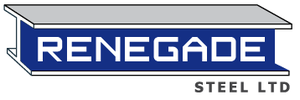
A wide flange beam is a type of building material used to construct homes, bridges, and other structures. Like the standard I-beam, it features a profile that resembles the letter "I" or "H." A central web connects the two parallel end units, known as flanges. While the flanges in a standard beam are relatively narrow, those in a wide beam are much broader, and may be equal in length to the height of the web. In Canada, wide flange beams represent the most widely-used type of beam, while standard I-beams are less common.
To understand how this type of beam works, a person can picture a single sheet of steel lying flat on the ground. This sheet represents the bottom flange of the beam. A second sheet of steel with the same dimensions as the first can be placed in the center of this sheet, positioned at a 90-degree angle, then welded or forged in placed to form the web. A third sheet is then placed parallel to the first to form the second flange. In a standard I-beam, the flanges are generally narrower than the height of the web, while in a wide flange beam, they are often just as long as the web is tall.
To understand how this type of beam works, a person can picture a single sheet of steel lying flat on the ground. This sheet represents the bottom flange of the beam. A second sheet of steel with the same dimensions as the first can be placed in the center of this sheet, positioned at a 90-degree angle, then welded or forged in placed to form the web. A third sheet is then placed parallel to the first to form the second flange. In a standard I-beam, the flanges are generally narrower than the height of the web, while in a wide flange beam, they are often just as long as the web is tall.

This beam can be used in many types of building applications. In the US, it is the standard for creating columns in home and commercial buildings. These beams can also be placed parallel to the ground to form floors and roofs. They also play a pivotal role in bridge construction, and serve as structural supports for highway ramps and overpasses. These beams are traditionally made of steel or aluminum, though wood and composite models have also become more common, particularly for residential construction.

 RSS Feed
RSS Feed